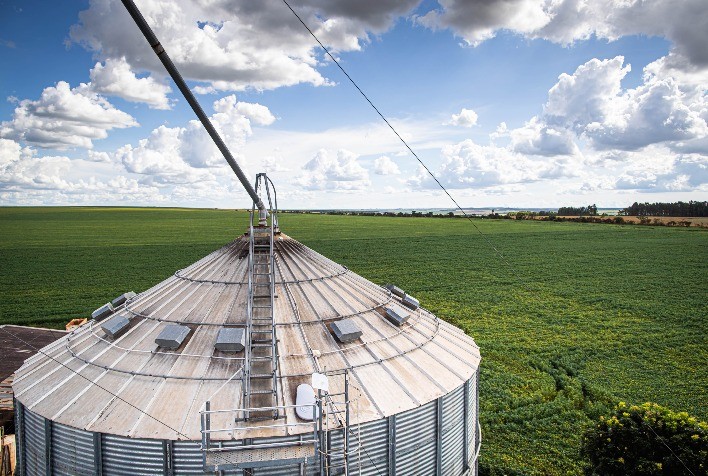Expansion reflects significant increase in agricultural storage infrastructure across the country
In the second half of 2023, Brazil recorded a 4.7% increase in its total agricultural storage capacity, reaching 210.9 million tons. This growth follows the addition of 418 new storage facilities, bringing the total number to 9,102 units in operation.
Regional Distribution and Main States
All regions of the country showed an increase in the number of storage facilities during the period, with emphasis on the South and Central-West, which recorded the highest growth percentages: 5.1% and 6.7%, respectively. Rio Grande do Sul leads with 2,387 facilities, followed by Mato Grosso, which holds the largest individual storage capacity, with 55.5 million tons.
Main Products and Stock Changes
Total stocks of agricultural products increased by 13.2%, reaching 44.6 million tons by the end of the second half of 2023. Corn represents the largest volume stored, with 21.0 million tons, followed by soybeans, which recorded a significant increase of 39.6% in stock, totaling 11.3 million tons. In contrast, wheat stocks showed a reduction of 13.3% due to weather problems during the harvest.
Storage Types and Capacity Used
Silos continue to predominate as the main form of storage in Brazil, representing 52.2% of the total available capacity, with an increase of 4.6% compared to the previous half-year. Bulk and bulk warehouses, concentrated mainly in the Central-West, contribute significantly to the total capacity, with 77.8 million tons.
Future Outlook
The expansion in storage capacity reflects the continued growth of Brazil’s agricultural infrastructure, preparing the country to face seasonal and climatic challenges. Diversifying warehouse types and modernizing facilities are key to sustaining robust growth in the national agricultural sector.
With a robust inventory outlook and growing storage capacity, Brazil is strengthening its position as a global leader in the production and marketing of agricultural commodities, ensuring food security and economic stability for the future.

